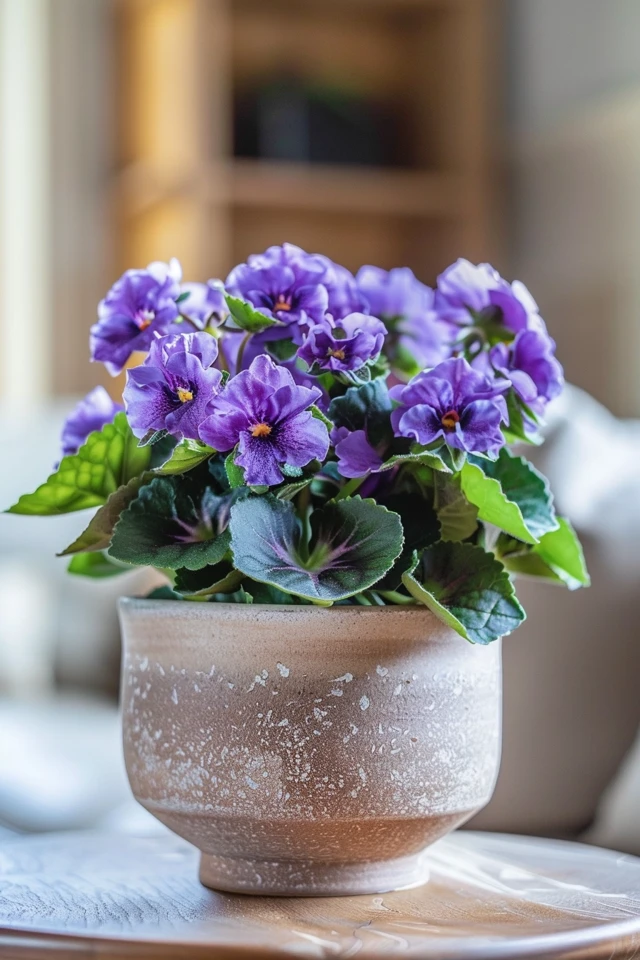Are you looking to enhance the beauty and vibrancy of your African violets? Pruning is a key practice that can help you achieve just that. By trimming your African violets, you can encourage new cycles of blooms and maintain their compact, bushy form.
African violets should be pruned after they have finished blooming, usually in the post-bloom period when the flowers have faded. Before pruning, it is essential to assess the health of the plant and ensure it is free from pests or diseases. Using proper pruning tools, such as small, sharp scissors or pruning shears, will allow for precise cuts that minimize damage to the plant.
Pruning African violets goes beyond simply removing dead or damaged foliage. It is an opportunity to shape the plant for better growth and maintain its lush appearance. You can remove dead leaves, propagate new plants from basal leaves, and control the size and shape of the plant through pruning. However, it is important to avoid over-pruning, as it can stress the plant and hinder its ability to flower.
Key Takeaways:
- Prune African violets after they have finished blooming for tidy plants and to encourage new cycles of blooms.
- Assess the health of the plant before pruning and ensure it is free from pests or diseases.
- Use proper pruning tools, such as small, sharp scissors or pruning shears, for precise cuts.
- Pruning is not just about removing dead or damaged foliage, but also about shaping the plant for better growth and maintaining its compact form.
- Avoid over-pruning, as it can stress the plant and hinder its ability to flower.

Pruning Techniques for African Violets
When it comes to pruning African violets, following the right techniques is crucial for their health and growth. Here are some best practices and steps to prune African violets effectively:
- Sanitize your pruning tools: Before starting the pruning process, make sure to sanitize your pruning tools to prevent the spread of disease. Clean and sterilize your scissors or pruning shears with rubbing alcohol or a bleach solution.
- Pinch off spent flowers: To encourage new blooms, it’s important to pinch off spent flowers at the base. By removing faded flowers, you redirect the plant’s energy towards producing fresh blooms.
- Remove bottom leaves: On a monthly basis, consider removing the bottom leaves of the African violet plant. This helps create space for new leaves to grow and balances the overall growth of the plant.
- Snip close to the stem: When making cuts, it’s essential to snip as close to the stem as possible without causing any damage. Be precise and careful to avoid harming the main stem.
- Identify pruning targets: Take a closer look at your African violet and identify the pruning targets. Remove dead or damaged leaves, basal leaves, and leggy stems to improve the plant’s appearance and overall health.
- Selective pruning: To promote a bushier and more compact growth habit, practice selective pruning. Pinch off the tips of the stems and remove basal leaves to stimulate fresh growth and maintain the plant’s desired shape.
- Propagation: Consider propagating new African violet plants from the pruned leaves. Rooting the pruned leaves in a suitable growing medium can help you expand your collection of African violets.
- Maintain pot proportions: Pay attention to the size of the pot in relation to the African violet plant. If the plant becomes too tall or leggy, regularly remove a few older bottom leaves to maintain its appearance and prevent it from outgrowing its pot.
By following these pruning techniques and best practices, you can ensure the health and beauty of your African violets. Keep in mind that regular maintenance and proper care go hand in hand with pruning to support the overall vibrancy of these delightful plants.

Quote:
Proper pruning techniques not only keep African violets looking their best but also promote healthy growth and blooming.” – Expert Gardener
Post-Pruning Care for African Violets
After pruning African violets, it’s crucial to provide proper care for the plant’s recovery and future growth. One important aspect is watering, which should be done sparingly initially. It’s best to wait for signs of new growth before returning to a regular watering schedule. Overwatering can lead to root rot, so allowing the top layer of soil to dry out between waterings is essential.
In addition to watering, fertilizing African violets after pruning is necessary to encourage blooming. Once new growth appears, use a balanced, half-strength fertilizer. However, it’s important to avoid over-fertilizing as it can harm the plant.
Optimal conditions are also crucial for the overall health of African violets after pruning. Make sure to provide bright, indirect light and maintain consistent temperatures. Keeping a close eye on the plant for any signs of distress, such as wilting or leaf drop, is important. If necessary, adjust the care routine accordingly.
In conclusion, post-pruning care plays a significant role in the recovery and growth of African violets. By watering sparingly, fertilizing appropriately, and ensuring optimal conditions, you can set the stage for a flourishing and vibrant African violet plant.


